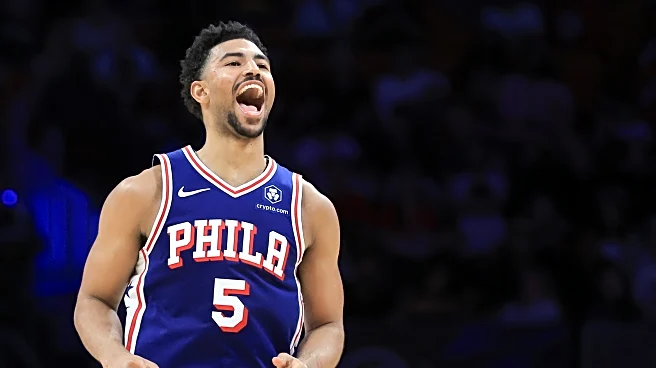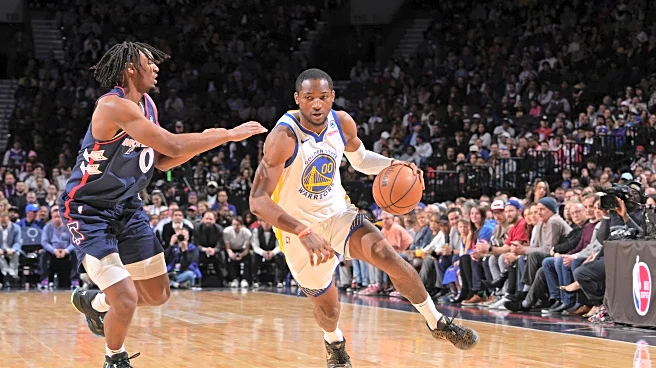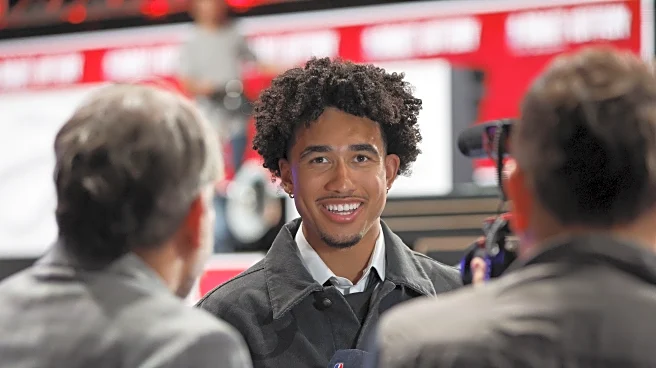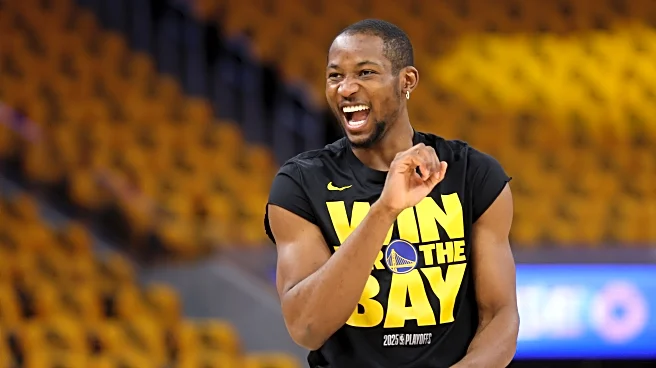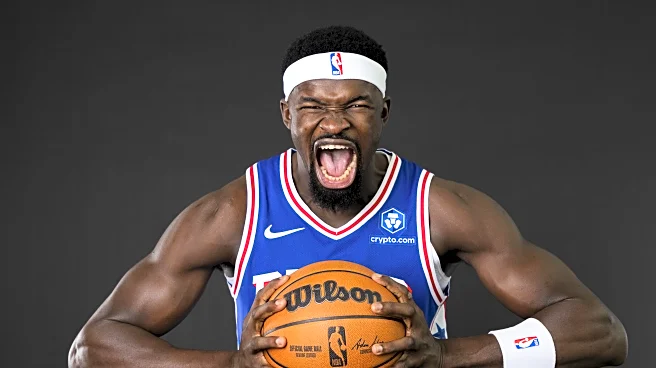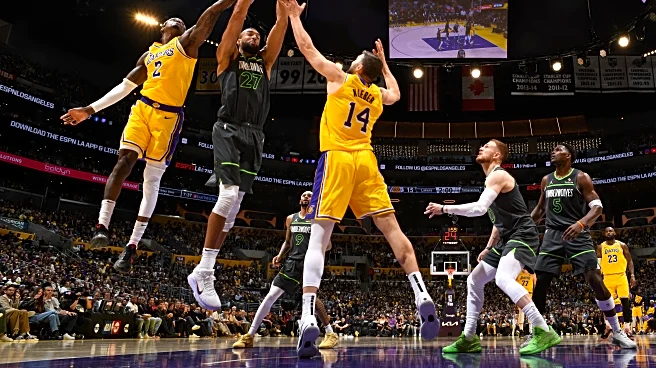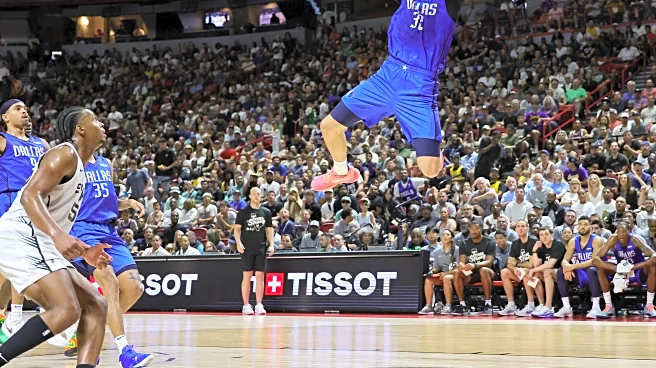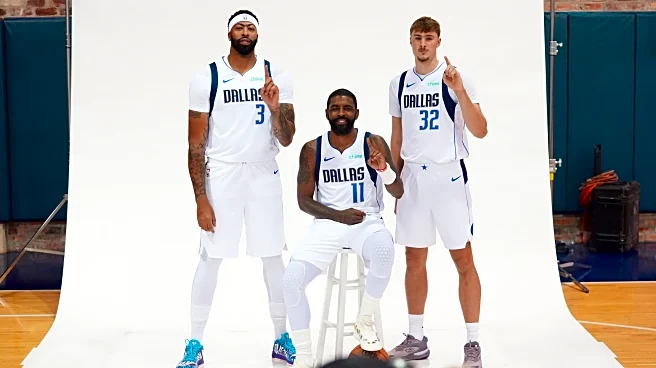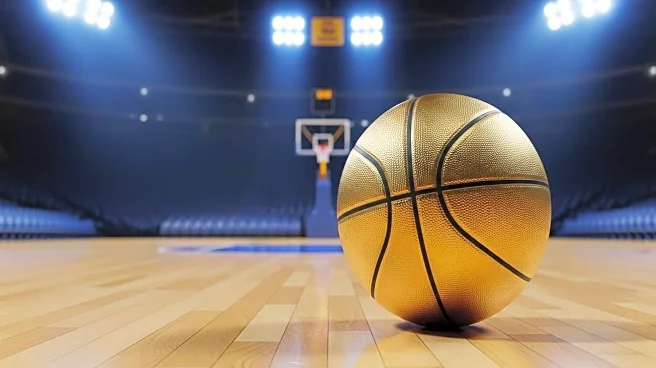With only hours to go until the Oct. 1 qualifying-offer deadline, Quentin Grimes finally ended his free-agency standoff with the Sixers on Wednesday by accepting his one-year, $8.7 million qualifying offer.
He’s now set to become an unrestricted free agent during the 2026 offseason and has full veto rights over any trade for the next year.
As Liberty Ballers’ Harrison Grimm wrote, the resolution to this saga is a loss for all parties. However, the two sides could never bridge the enormous gap between what Grimes wanted—somewhere north of $20 million per year—and what the Sixers were reportedly willing to offer (around $10 million per year). Why they couldn’t meet in the middle like Josh Giddey and the Chicago Bulls is anyone’s guess. (One hint: Think of the luxury-tax bill!)
So, where does this leave Grimes and the Sixers moving forward? Let’s break it down.
Will Grimes get traded this year?
Since Grimes is on a one-year deal and the Sixers have his Bird rights, he has the power to veto any trade involving him between now and the Feb. 5 trade deadline. That’s because his Bird rights won’t travel with him if he does get traded, which could limit his new team’s ability to re-sign him as a free agent next summer. His new team will only have non-Bird rights, so it can’t offer him a starting salary worth more than 120 percent of what he’s earning this year without using a separate salary-cap exception.
Grimes is now set to earn $8,741,209 this year. If his new team re-signs him with non-Bird rights, it couldn’t offer him a starting salary above $10,489,451. Here’s the most it could offer over a four-year deal:
2026-27: $10,489,451
2027-28: $11,013,923
2028-29: $11,538,396
2029-30: $12,062,868
Total: $45,104,638
Of note: The non-taxpayer mid-level exception in 2026-27 is currently projected to be $15,139,000 based on the rough salary-cap projection of $166 million. The room MLE is projected to be $9,425,000, which isn’t much lower than the most Grimes could earn via non-Bird rights.
All of that is to say: Grimes has real incentive to veto any trade that the Sixers try to include him in unless his new team projects to have cap space next summer. If he stays put, the Sixers will maintain his Bird rights, which would at least give them an avenue to re-sign him in 2026.
Had Grimes and the Sixers agreed on a one-year balloon deal that would have required him to waive his right to veto a trade, his new team would have been able to offer him more via his non-Bird rights. However, Bauman told ESPN’s Shams Charania that the Sixers only offered him $100,000 more than his qualifying offer to waive that trade veto, and “negotiations never advanced” from there.
Bauman added that he pitched the Sixers on a one-year, $17 million deal in which Grimes would waive the trade veto or a two-year, $34 million deal with a second-year player option on Wednesday, but the Sixers declined both. Given their proximity to the second apron, a deal starting above $16 million was likely a non-starter for them.
What this means for the Sixers moving forward
With Grimes on his qualifying offer, the Sixers now have $194.6 million in salary on their books. Since Justin Edwards counts as $2.3 million for tax/apron purposes rather than his $2.05 million cap hit, they’re now less than $1.1 million away from the first apron, $12.9 million away from the second apron, and roughly $7.0 million over the luxury-tax line. In other words, they’re one Kelly Oubre Jr. salary-dump away from ducking the tax yet again.
According to Adam Aaronson of PhillyVoice, the Sixers weren’t “discussing the qualifying offer as the sort of worst-case scenario that it is largely perceived as publicly” leading up to the deadline. If Grimes’ late-season breakout proves to be a mirage fueled by an injury-ravaged rotation, perhaps we look back on this as a major bullet dodged. However, Grimes’ ability to veto any trade this year will greatly limit the Sixers’ flexibility at the trade deadline.
The Sixers are not hard-capped at either apron at the moment, although they’re close enough to the first apron that they need to be careful about hard-capping themselves there. That means they likely won’t take back more salary than they send out in any trade (barring a salary dump to free up more space), nor will they spend more than the $5.7 million taxpayer mid-level exception.
As long as the Sixers stay under the second apron, they will be able to aggregate multiple contracts in a trade. However, Grimes is now their fifth-highest-paid player. Had they signed him to a balloon deal and gotten him to waive his veto rights, they could have packaged him with Oubre ($8.4 million) or Andre Drummond ($5.0 million) and taken back a fairly hefty salary. They’d now be reliant on Grimes’ approval to do so.
The Sixers will have Grimes’ Bird rights next summer if they keep him for the entire 2025-26 season, which means they can offer him anything up to a max deal even if they’re over the salary cap. If he proves integral to the team this year, perhaps the two sides will be able to find common ground in 2026. However, given the wide gap between Grimes’ camp and the Sixers in negotiations, it seems more likely than not that he’ll be moving on by next summer at the latest.
What this means for Grimes moving forward
Grimes is gambling on himself here, along with a financial environment that should be more favorable to free agents next offseason. According to Charania, “at least 10 teams are slated to have significant salary-cap space” in the summer of 2026, although that’s still very much subject to change for the time being. Rookie-scale extensions and trades between now and Feb. 5 could take some of those teams off the market entirely.
For instance: The Washington Wizards currently have nearly $64 million in expiring salary on their books between Khris Middleton ($33.3 million) and CJ McCollum ($30.7 million). If they flip either of those guys for someone on a longer-term contract, that could limit how much they’d be able/willing to spend on Grimes.
The Los Angeles Lakers could also have $60-plus million in cap space next summer, provided LeBron James either retires or leaves as a free agent. But with Luka Dončić in the fold and a new contract looming for Austin Reaves as well, would they be willing to shell out even more money on another backcourt player in Grimes?
Grimes now has millions of dollars riding on how he performs this season, which could go one of two ways. If he ingratiates himself with the rest of the roster and helps the Sixers exceed expectations, some team might be willing to shell out big bucks for him next year. But if he gets injured and/or goes into ball-hog mode, it could decrease interest in him, forcing him to take a shorter-term, prove-it contract.
Former Sixers center Nerlens Noel is living proof of how betting on yourself can sometimes backfire. Noel reportedly turned down a four-year, $70 million offer from the Dallas Mavericks and eventually settled for his $4.1 million qualifying offer instead. After scuffling through an injury-ravaged season, he wound up taking a two-year, veteran-minimum contract with the Oklahoma City Thunder the following summer. He rebuilt his value in OKC and eventually cashed in with the New York Knicks, but it took him two full years to get his big payday after he became an unrestricted free agent.
Grimes can only hope that he doesn’t follow in Noel’s footsteps, but there’s a long time to go between now and next July. There’s far more downside for him in taking the QO than upside, although maintaining veto rights on trades does give him power over his future.
For now, this resolution is a disappointment for all sides. But there’s still plenty of time for both Grimes and the Sixers to redeem themselves.
Unless otherwise noted, all stats via NBA.com, PBPStats, Cleaning the Glass or Basketball Reference. All salary information via Salary Swish and salary-cap information via RealGM.
Follow Bryan on Bluesky.

